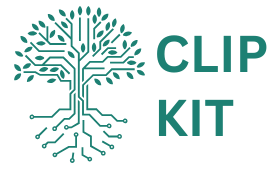Table of Contents
ToggleIn today’s fast-paced world, the tech ecosystem is like a bustling city where innovation never sleeps. Imagine a place where startups sprout like wildflowers and giants of the industry are just a stone’s throw away. This vibrant landscape fuels creativity and collaboration, making it the ultimate playground for tech enthusiasts and entrepreneurs alike.
Overview of the Tech Ecosystem
The tech ecosystem thrives on innovation and collaboration. This vibrant environment consists of diverse entities that contribute to its overall growth.
Definition and Importance
A tech ecosystem refers to the network of organizations, individuals, and systems that interact to drive technology development. This network encompasses startups, corporations, investors, educators, and government entities. Importance lies in fostering advancements, creating jobs, and influencing economic growth. Regions with robust tech ecosystems experience higher rates of innovation. Furthermore, collaboration among various stakeholders promotes resource sharing and knowledge exchange, enhancing overall industry effectiveness.
Key Components
Several key components define a successful tech ecosystem. Startups are often at the forefront, driving innovation and providing new solutions. Corporations bring stability, funding, and scalability to emerging technologies. Investors play a crucial role by providing capital to promising ventures, enabling growth and development. Educational institutions contribute by producing skilled talent, fueling research, and providing incubator programs. Lastly, government policies and initiatives shape the ecosystem by offering support and resources for technological advancement.
Key Players in the Tech Ecosystem

Key players within the tech ecosystem encompass various entities that contribute significantly to technology development and innovation. Startups and established companies drive progress and provide the foundation for growth.
Startups
Startups play a crucial role in fostering innovation. They often introduce groundbreaking technologies and fresh ideas, energizing the ecosystem. These early-stage companies, like Uber and Slack, continually push boundaries, adapting to market needs. Additionally, startups help create jobs and stimulate economic growth. They thrive on support from investors and mentors, creating vibrant networks that empower entrepreneurs.
Established Companies
Established companies contribute stability and resources. Giants such as Google and Microsoft not only provide funding but also access to extensive networks and expertise. Their involvement ensures that innovations from startups can scale successfully. Furthermore, they facilitate partnerships that benefit both parties, enhancing collaboration within the ecosystem. These companies often engage in research and development, driving advancements in various tech fields.
Investors and Venture Capitalists
Investors and venture capitalists fuel startup growth through funding. They assess potential opportunities, identifying innovative projects that align with industry trends. By providing financial resources, they enable startups to develop products and expand operations. Venture capital firms like Sequoia Capital and Andreessen Horowitz prioritize high-potential companies, often leading to considerable returns on investment. Their backing not only propels startups forward but also strengthens the entire tech ecosystem, fostering a collaborative environment.
Trends Shaping the Tech Ecosystem
Technological advancement transforms industries and reshapes daily life. Several key trends define this ever-evolving landscape.
Emerging Technologies
Artificial intelligence, blockchain, and the Internet of Things lead the charge in emerging technologies. AI enhances data analysis, automating processes for businesses across various sectors. Blockchain secures transactions, creating transparency in finance and supply chains. The Internet of Things connects devices, facilitating smarter homes and workplaces. These technologies not only fuel innovation but also attract startups eager to push boundaries. Companies in diverse fields embrace these advancements, demonstrating their critical role in shaping the future of the tech ecosystem.
Consumer Behavior
Shifts in consumer behavior drive changes within the tech ecosystem. Users now prioritize digital experiences over traditional interactions. Personalization plays a pivotal role; companies leverage data analytics to tailor products and services to individual preferences. Sustainability concerns also influence purchasing decisions as eco-friendly technologies gain traction. Moreover, mobile usage surges, prompting businesses to optimize applications and websites for on-the-go accessibility. Adapting to these behaviors allows companies to remain competitive and responsive to market demands, ensuring the tech ecosystem thrives on consumer insights.
Challenges Facing the Tech Ecosystem
The tech ecosystem faces several significant challenges that impact innovation and growth. These challenges include regulatory hurdles and talent shortages.
Regulatory Hurdles
Regulatory hurdles create barriers for tech companies. Compliance with complex policies often consumes valuable resources. Startups, in particular, struggle with navigating these intricate regulations, which can slow down their growth. Additionally, established firms face scrutiny from regulatory bodies that may stifle innovation. Unclear guidelines around data privacy and security further complicate the landscape, making it difficult for businesses to adapt. As companies work to meet these regulations, they’ll require more streamlined processes and clearer communication from authorities. An ongoing dialogue between tech entities and regulators can foster a more supportive environment for innovation.
Talent Shortage
Talent shortages pose a serious challenge to the tech ecosystem. Many companies compete for skilled professionals in fields like software development and data analytics. The demand for workers often outweighs the available supply, limiting growth potential for tech businesses. Educational institutions struggle to keep pace with rapidly changing industry needs, leaving graduates without essential skills. Furthermore, regions with robust tech ecosystems experience this shortage acutely, as established firms attract top talent. Companies that prioritize continuous learning and development can build stronger teams. Collaboration with educational institutions can help bridge the skill gap and prepare future professionals.
Future of the Tech Ecosystem
The future of the tech ecosystem holds exciting possibilities driven by innovation and evolving consumer needs. Predictions indicate a surge in the integration of artificial intelligence, blockchain, and the Internet of Things across various industries. AI-enhanced applications are transforming customer interactions while blockchain offers secure digital transactions. As industries adopt these technologies, startups will likely play a pivotal role in creating novel solutions. Corporations are expected to invest more in research, spurring collaborative efforts that enhance product and service offerings.
Opportunities for growth abound in this vibrant landscape. Emerging startups focusing on sustainability align with consumer preferences for environmentally friendly practices. The expansion of remote work generates demand for software solutions that facilitate virtual collaboration. Furthermore, educational institutions have a unique chance to partner with tech companies for curriculum development that meets industry needs. Institutions fostering ongoing talent development can help bridge the skills gap while providing businesses with a skilled workforce. This partnership proves essential for fueling innovation and maintaining a healthy tech ecosystem.
The tech ecosystem stands as a vibrant hub of innovation and collaboration. It’s a space where startups and established companies work together to push boundaries and drive progress. As emerging technologies reshape industries and consumer preferences evolve, the ecosystem will continue to adapt and thrive.
Challenges like regulatory hurdles and talent shortages must be addressed to ensure sustained growth. However, the potential for exciting advancements remains strong. With a focus on partnerships between educational institutions and tech companies, the future looks bright for developing a skilled workforce ready to tackle the demands of an ever-changing landscape.




